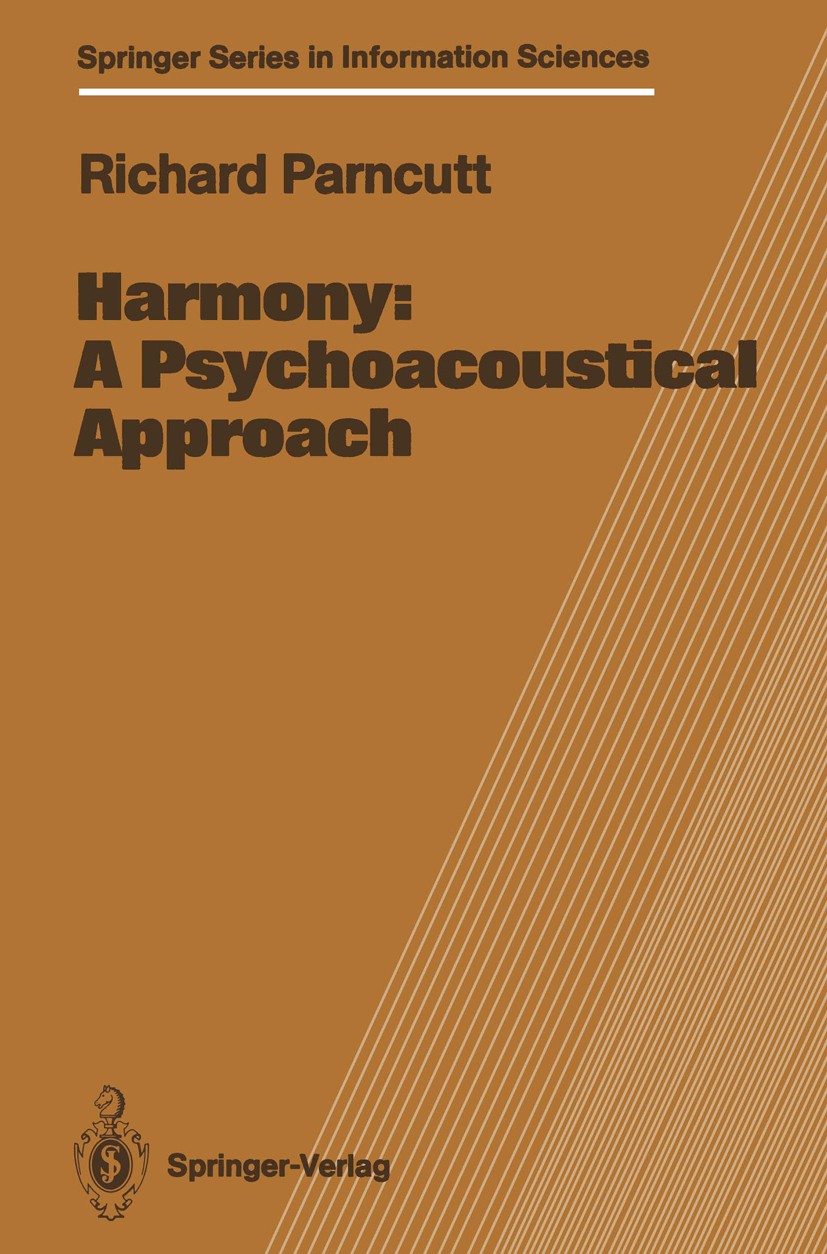| 书目名称 | Harmony: A Psychoacoustical Approach | | 编辑 | Richard Parncutt | | 视频video | http://file.papertrans.cn/425/424337/424337.mp4 | | 丛书名称 | Springer Series in Information Sciences | | 图书封面 |  | | 描述 | My first encounter with the theory of harmony was during my last year at school (1975). This fascinating system of rules crystallized the intuitive knowledge of harmony I had acquired from years of piano playing, and facilitated memorization, transcription, arrangement and composition. For the next five years, I studied music (piano) and science (Physics) at the Univer sity of Melbourne. This "strange combination" started me wondering about the origins of those music theory "rules". To what extent were they determined or influenced by physics? mathematics? physiology? conditioning? In 1981, the supervisor of my honours project in musical acoustics, Neville Fletcher, showed me an article entitled "Pitch, consonance, and harmony", by a certain Ernst Terhardt of the Technical University of Munich. By that stage, I had devoured a considerable amount of (largely unsatisfactory) material on the nature and origins of harmony, which enabled me to recognize the significance of Terhardt‘s article. But it was not until I arrived in Munich the following year (on Terhardt‘s invitation) that I began to appreciate the conse quences of his "psychoacoustical" approach for the theory of harmony. T | | 出版日期 | Book 1989 | | 关键词 | Harmony; Music Theory; Psychoacoustics; acoustics; crystal; influence; mathematics; perception; physics; phys | | 版次 | 1 | | doi | https://doi.org/10.1007/978-3-642-74831-8 | | isbn_softcover | 978-3-642-74833-2 | | isbn_ebook | 978-3-642-74831-8Series ISSN 0720-678X | | issn_series | 0720-678X | | copyright | Springer-Verlag Berlin Heidelberg 1989 |
The information of publication is updating

|
|
 |Archiver|手机版|小黑屋|
派博传思国际
( 京公网安备110108008328)
GMT+8, 2025-12-28 23:05
|Archiver|手机版|小黑屋|
派博传思国际
( 京公网安备110108008328)
GMT+8, 2025-12-28 23:05


